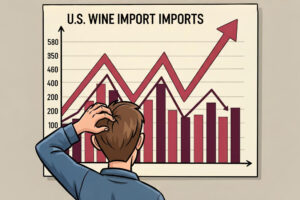
The week of Ferragosto historically rhymes with vacations, but for the wine world, even if not for all of it, but still a significant part of it, is harvest time, also because of the climate phenomena that are strongly influencing the harvest times. Italy’s wine industry is, in fact, gradually entering the heart of the 2024 harvest which, in many places, has begun earlier than in the past (as some of the most established and expert wine consultants and agronomists of “Bel Paese” also told WineNews). To beat everybody else, chronologically speaking, was Sicily where the harvest was already live half July, for some wineries and in various territories on the island, but the first bunches of grapes have already been cut in Salento, Puglia, the Tuscan Maremma, and beyond, as of now. From today, the first district organically and massively entering the harvest operations is Franciacorta, a territory that stands among the “Bigs” of Italian winemaking and excellence of Classic Method Spumante. But what kind of harvest can we expect it to be? The Franciacorta Consortium, the organization (representing 123 wineries) which guarantees and controls compliance with the production discipline of Franciacorta, the first Italian wine produced exclusively with the method of in-bottle refermentation to have obtained the Controlled and Guaranteed Designation of Origin (Docg) in 1995, talks about expectations, for the 2024 vintage, emerging from a decent climate context. “We are thrilled to announce the start of the harvest - comments the president of the Consortium Silvano Brescianini - this year’s climatic conditions were complex, but the winemakers were able to deal with them with great expertise, and we are confident that the quality of the grapes will be interesting. The producers have worked with dedication and attention, and the results will certainly live up to expectations. This harvest represents a crucial moment not only for our production, but also for the valorization of our land and our traditions”.
The wine growing season began with a positive thermal anomaly that characterized the first months of 2024: after an average January, over two months arrived with mild temperatures, above average. This climatic condition favoured the development of the vine, bringing budding forward by about a week compared to the historical average of the last 25 years. In mid-April, however, a reversal of this trend was recorded, with two light frosts in the third week which have not caused any significant damage. June, like May, saw disturbed weather conditions, with average temperatures in both minimum and maximum temperatures. This thermal drop has brought the levels of accumulation of thermal resources back to values nearing the historical average, thus reducing the phenological advance. From a rainfall perspective, the April-June quarter recorded almost 650 millimetres of rain, making it the wettest from 1997 to 2024, followed by 2023 with 482 millimetres. Interestingly, May saw 14 days of rain, compared to 20 the previous year, both above the historical average of 10 days. Franciacorta winemakers faced significant challenges during April, May and June, protecting vines from fungal diseases, particularly downy mildew, which thrives in conditions of frequent rain and mild temperatures. Although localized damage from downy mildew was found, the general health situation remains under control. July marked a change, with temperatures frequently exceeding 30°C and almost no rain, favouring the ripening of the grapes. Currently, the production load is average, the health status is good and the harvest is expected to continue until the end of August.
The 2024 harvest in Franciacorta will also be able to make use of the support of the new microvinification laboratory created in collaboration with the Accademia Symposium in Rodengo Saiano, an important tool that will allow a series of microvinifications to be performed by Franciacorta on its own with the scientific support of UniMi (University of Milan) and Fem ( Edmund Mach Foundation), to study, through wines, the response strategies to climate change and beyond, which the Consortium is already implementing. There are several topics under investigation, including the testing of the oenological response of a series of genotypes obtained by crossing Erbamat and Chardonnay. Mario Falcetti, coordinator of the Research and Development group at Franciacorta Consortium, thinks that “the setting up of the microvinification laboratory, in support of the intense R&D activity of the Franciacorta Consortium, represents a great opportunity to verify, directly on site and in real time, the different lines of investigation that we are pursuing to adapt the Franciacorta viticultural model to the pressure exerted by climate change. Furthermore, it is a great tool for sharing and disseminating new knowledge and constitutes the fundamental element for the creation of a technical wine library (of experimental Franciacorta wines) very useful to verify, over time, the effectiveness of the results acquired”.
Copyright © 2000/2025
Contatti: info@winenews.it
Seguici anche su Twitter: @WineNewsIt
Seguici anche su Facebook: @winenewsit
Questo articolo è tratto dall'archivio di WineNews - Tutti i diritti riservati - Copyright © 2000/2025